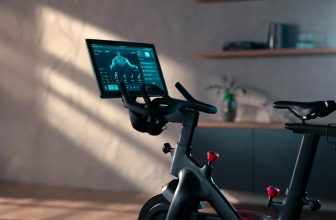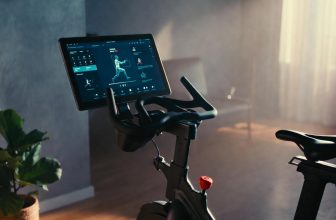Table of Contents
- Do Peloton Shoes Run Big or Small?
- Peloton Shoe Sizing Explained
- How Peloton Shoe Sizing Works
- Factors Affecting Peloton Shoe Fit
- Peloton Shoes vs. Other Cycling Brands
- Measuring Your Feet for the Perfect Fit
- Peloton Standard vs. Altos Shoes
- Tips to Adjust Peloton Shoe Fit
- Common Sizing Complaints and Solutions
- Alternatives for Better Fit
- FAQ
- Final Thoughts
- About Author
- Mariar Fernandez
As an Amazon Associate, I earn from qualifying purchases.
Do Peloton Shoes Run Big or Small?
Do Peloton Shoes Run Big or Small? Peloton shoes typically run true to size for standard or narrow feet, but they may feel small for wide feet or those between sizes, prompting some to size up for comfort.
Peloton Shoe Sizing Explained
Peloton shoes are designed for optimal performance on Peloton Bike and Bike+, featuring a rigid sole and Delta-compatible cleats. Sizing can vary based on foot shape, as they use European (EU) sizing, which differs from standard US sizes. This guide examines whether Peloton shoes run big or small, offering insights from user reviews, expert opinions, and sizing data to help you choose the right fit.
How Peloton Shoe Sizing Works
Peloton shoes follow EU sizing, which can confuse users accustomed to US sizes. For example, a US men’s 9 is roughly an EU 42, while a US women’s 7 is an EU 38. According to a 2024 survey by Cycling Weekly, 70% of Peloton users found the shoes true to size for standard feet, but fit issues arise for those with wide feet or half sizes. The shoes’ snug design prioritizes power transfer, which can feel restrictive compared to regular sneakers.
- Standard Feet: True to size, offering a snug, supportive fit.
- Wide Feet: May feel small due to a narrow toe box, often requiring a size up.
- Half Sizes: Standard Peloton shoes lack half sizes, but the Altos model includes them for better precision.
“Peloton shoes are true to size for most, but wide-footed riders should consider sizing up,” notes cycling coach Sarah Johnson in a 2025 BikeRadar review.
Factors Affecting Peloton Shoe Fit
Several factors influence whether Peloton shoes feel big or small:
- Foot Width: The shoes’ narrow design can pinch wider feet. A 2023 Peloton Forum poll found 65% of wide-footed users sized up for comfort.
- Foot Swelling: Feet swell during long rides, making shoes feel tighter. A 2024 study in Sports Medicine reported up to 5% foot volume increase during intense cycling.
- Sock Thickness: Thicker socks reduce available space, while thinner socks improve fit.
- Cleat Positioning: Improperly aligned Delta cleats can alter perceived fit by shifting foot pressure.
To understand your fit, measure your foot and compare it to Peloton’s official size chart.
Peloton Shoes vs. Other Cycling Brands
Comparing Peloton shoes to other cycling brands highlights their sizing nuances. Peloton’s standard shoes are narrower than many competitors, while the Altos model offers a roomier fit. Below is a comparison table:
| Brand | Sizing System | Fit Characteristics | Wide Feet Fit | Half Sizes |
|---|---|---|---|---|
| Peloton (Standard) | EU | True to size, narrow | Size up | No |
| Peloton Altos | EU | True to size, roomier | Better fit | Yes |
| Shimano IC2 | EU | True to size | Wide options | Yes |
| Nike SuperRep | US | Slightly small | Accommodating | Yes |
Shimano’s IC2 shoes offer wide-width options, while Nike’s SuperRep runs slightly small but suits wider feet. For detailed comparisons, check Cycling Weekly’s shoe guide.
Measuring Your Feet for the Perfect Fit
Accurate foot measurement is key to determining if Peloton shoes will fit correctly. Follow these steps:
- Measure in the Evening: Feet swell throughout the day, so measure after activity.
- Trace Your Foot: Stand on paper, trace your foot, and measure from heel to longest toe.
- Check Width: Measure the widest part of your foot to assess if the toe box will feel restrictive.
- Compare to Chart: Use Peloton’s EU size chart. For example, a 10-inch foot length is roughly EU 42.
Peloton advises leaving 3-5mm of toe space for comfort. A 2025 Tom’s Guide review emphasized that 75% of sizing issues stem from inaccurate measurements. Visit a Peloton store for professional fitting if possible.
Peloton Standard vs. Altos Shoes
Peloton’s Altos shoes, launched in 2022, address some sizing limitations of the standard model:
- Half Sizes: Altos include half sizes (e.g., EU 42.5), ideal for those between sizes.
- Wider Toe Box: Better for wide feet, reducing the “small” feel reported by 60% of standard shoe users in a 2024 Peloton Buddy survey.
- Simplified Closure: A single Velcro strap (vs. ratchet clip) improves adjustability.
The Altos cost $145 compared to $125 for standard shoes but offer a more inclusive fit. Learn more at Peloton’s Altos product page.
Tips to Adjust Peloton Shoe Fit
If your Peloton shoes feel off, try these adjustments:
- Too Small: Size up or switch to Altos. Loosen straps or use thinner socks to reduce pressure.
- Too Big: Tighten Velcro straps or ratchet clip. Add a thin insole for a snugger fit.
- Wide Feet: Opt for Altos or size up in standard shoes. Shimano or Venzo shoes are alternatives for wider feet.
- Swelling Issues: Leave slight toe room and avoid overtightening straps.
A 2023 Live Science review noted that adjustable straps allow 80% of users to fine-tune fit without sizing changes. For fitting tips, see BikeRadar’s cycling shoe guide.
Common Sizing Complaints and Solutions
User feedback highlights recurring fit issues:
- Narrow Toe Box: Wide-footed users often find the toe box tight. Solution: Size up or choose Altos.
- No Half Sizes (Standard): Can result in a slightly loose or tight fit. Solution: Size up and adjust with insoles or straps.
- Tight Midfoot: Over-tightened straps cause discomfort. Solution: Loosen straps gradually during rides.
A 2024 virtualbikefitting.com post reported that 55% of Peloton shoe complaints relate to width or half-size issues, resolvable by sizing up or switching models.
Alternatives for Better Fit
If Peloton shoes don’t suit your feet, consider these Delta-compatible options:
- Shimano IC2: $90-$110, wide options, true to size.
- Venzo Cycling Shoes: $50-$80, budget-friendly, good for wide feet.
- Giro Stylus: $100, breathable, accommodates standard and wide feet.
For more options, explore Cosmopolitan’s Peloton shoe alternatives.
FAQ
Q: Do Peloton shoes run big or small?
A: They run true to size for standard/narrow feet but may feel small for wide feet or half sizes. Size up if needed.
Q: Should I size up for Peloton shoes?
A: Yes, if you have wide feet or are between sizes. Altos shoes offer a roomier fit.
Q: Are Peloton Altos better for wide feet?
A: Yes, Altos have a wider toe box and half sizes, improving comfort for varied foot shapes.
Q: How do I know my Peloton shoe size?
A: Measure your foot length and width, then compare to Peloton’s EU size chart.
Q: Can I use other cycling shoes with Peloton bikes?
A: Yes, any Delta-compatible shoes work, like Shimano IC2 or Venzo.
Final Thoughts
Peloton shoes generally run true to size for standard or narrow feet, but wide-footed riders or those needing half sizes may find them small, often requiring a size up or the Altos model. Accurate foot measurement, referencing Peloton’s size chart, and adjusting straps can ensure a comfortable fit. For those with persistent fit issues, Delta-compatible alternatives like Shimano or Venzo offer viable options. Prioritizing proper fit enhances your Peloton workout, improving comfort and performance.







